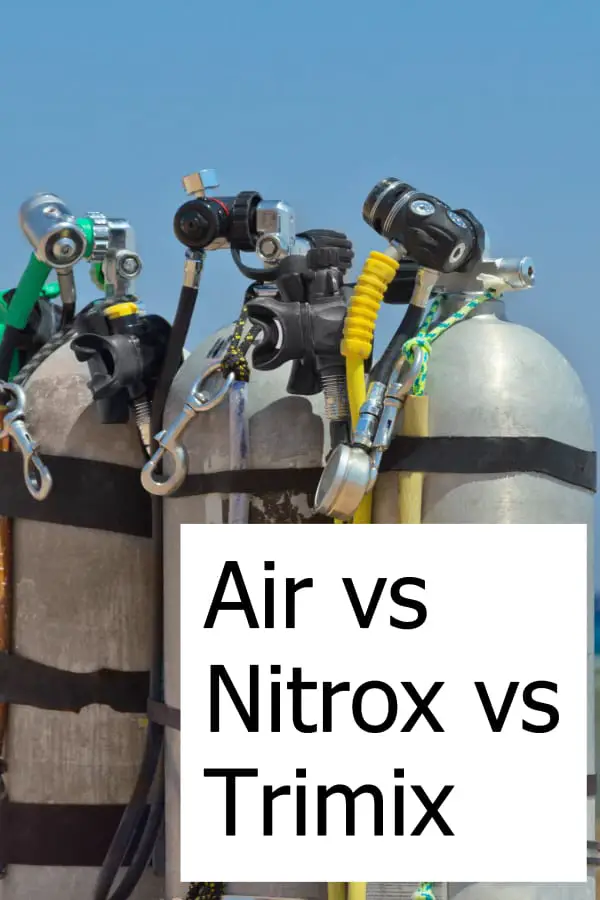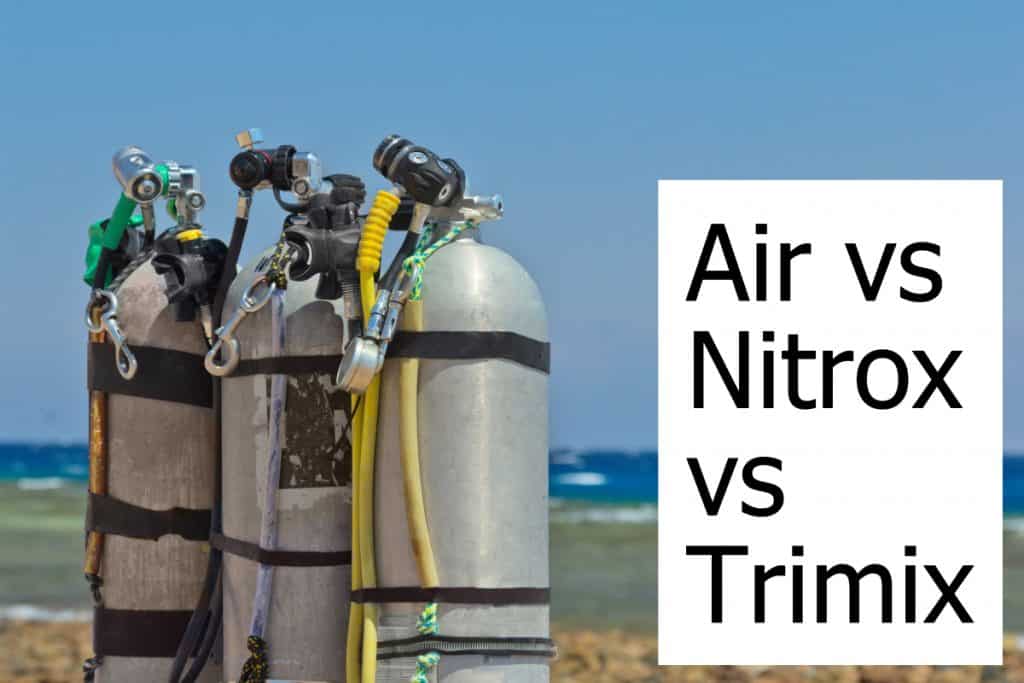Air vs Nitrox vs Trimix
Try to remember back to your first dive. You were probably nervous and excited, wondering if you had checked and double-checked all of your gear. You made sure that you had air in your tank and probably eyed some technical divers that were using Nitrox or even Trimix.
You might have been focused on the environment and your buddy and trying to remember everything you learned in your dive classes.
You probably weren’t thinking too much about the breathing gas that was in your tank, other than to make sure your levels were good. Diving with anything but Air seemed like a lifetime away.
But as you advance in your diving career, you may start to become more cognizant of the different options available to you. Are you content with a standard air mixture? Have you thought about trying Nitrox? And what is this Trimix that you keep hearing about?
Find the Best Air Integrated Dive Computer for Nitrox diving!
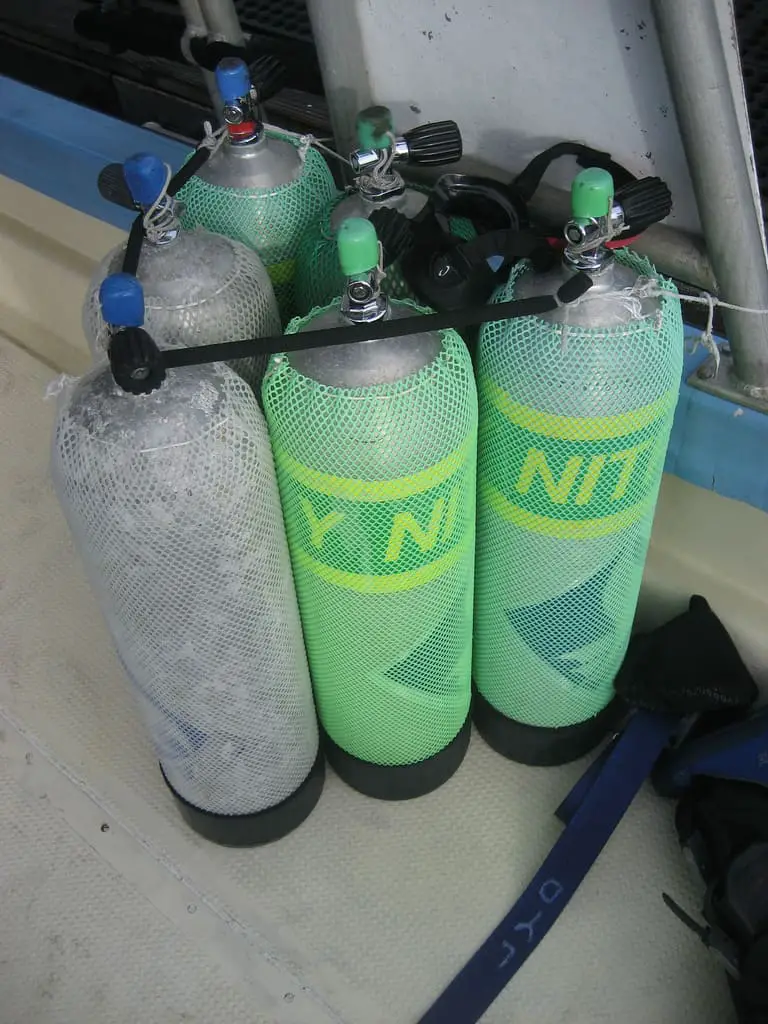
Air vs Nitrox vs Trimix – Comparing the Gasses
Here’s a breakdown of three of the more well-known breathing gas mixtures available to divers, today. As you can see, there are different mixtures for different conditions, and the science behind which breathing gas you should use is thorough and precise so that you can stay safe and have a great dive.
Air
Atmospheric air is the most commonly used gas for recreational scuba diving. It is generally a mixture of nitrogen and oxygen, with some trace amounts of carbon dioxide, argon, and other gases. In terms of percentages, most standard air contains about 78% nitrogen and 21% oxygen, and the air in a scuba tank has been compressed for longer usage under the water.
This breathing gas is considered safe on dives of less than 40 meters (130 feet) and requires no special equipment other than your tank and breathing apparatus, which makes it perfect for most recreational divers. If you’re not interested in going deeper than that, you can be content with having air in your tank, and you’ll only have to worry about the most basic diving certifications.
Nitrox
Nitrox, like atmospheric air, contains a mixture of nitrogen and oxygen, but the percentages have been adjusted to prevent decompression illness and allow divers to stay underwater for longer (although not deeper).
Most Nitrox is made up of a blend of 64 to 68% nitrogen and 32 to 40% oxygen (although recreational dives can also include oxygen levels of as low as 22%). This higher oxygen content reduces the risk of getting the Bends because it decreases the amount of nitrogen being absorbed into the tissues. Of course, there are also risks for breathing higher levels of oxygen, which means that Nitrox is not safe for diving at increased depths.
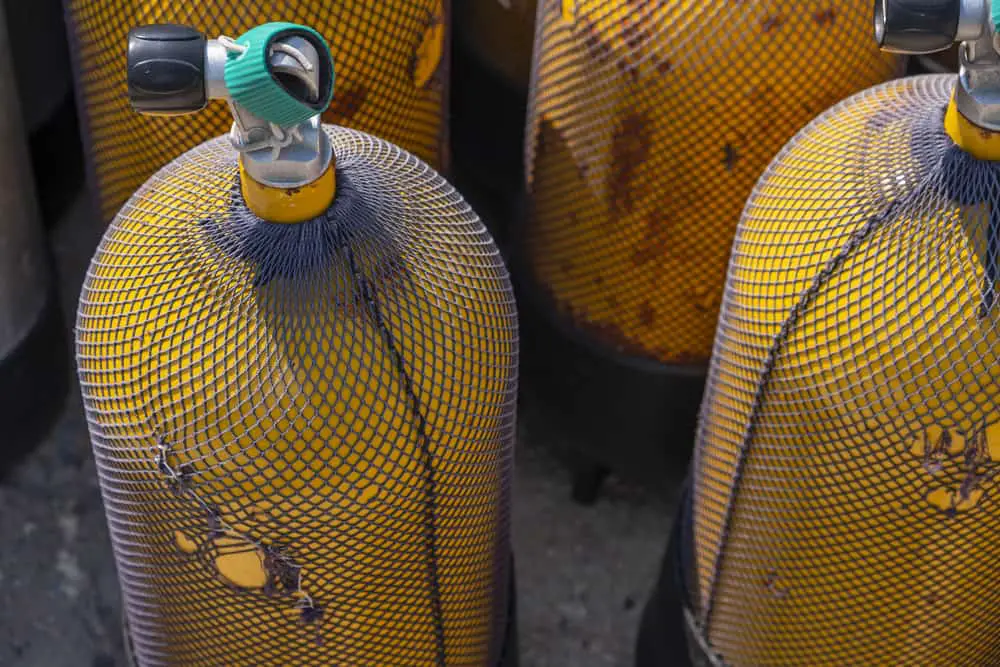
In order to use Nitrox safely, it’s important to get special training on the topic. In your class, you’ll learn how to properly blend and use Nitrox in your dive.
Of course, finding a dive shop that can accurately blend Nitrox is also very useful. In terms of special equipment, you’re going to need to get a gas analyzer to check the accuracy of your blend. There is also a risk of flammability whenever you’re dealing with pure oxygen, so tanks must be cleaned for use with Nitrox and serviced annually.
Trimix
In many ways, Trimix is in a league of its own when it comes to breathing gases. This blend, which comes from the Latin tri for three, is made up of helium, oxygen, and nitrogen.
The use of helium allows divers to explore depths that would be unsafe with other breathing gases because of the risk of narcosis and oxygen toxicity. While the exact percentage of each element depends on the depth of the dive, trimix blends for a dive of 240 feet may consist of 17% oxygen, 33% nitrogen, and 50% helium.
Trimix is largely outside of the scope of recreational diving practices because it requires extensive training and equipment. For a basic class, for instance, you’ll have to meet the requirement of being an experienced certified diver. In terms of equipment, trimix requires a lot:
- back-mounted double steel cylinders (labeled to TDI standards)
- a regulator for the bottom gas supply
- a regulator that is O2 clean
- a dive computer
- access to software to plan your dive with the same algorithm as your dive computer.
That’s not to mention the logistical adjustments you also need to consider for dives using Trimix: a drysuit to deal with colder temperatures, a lighting system, gloves, appropriate fins for longer dives, etc.
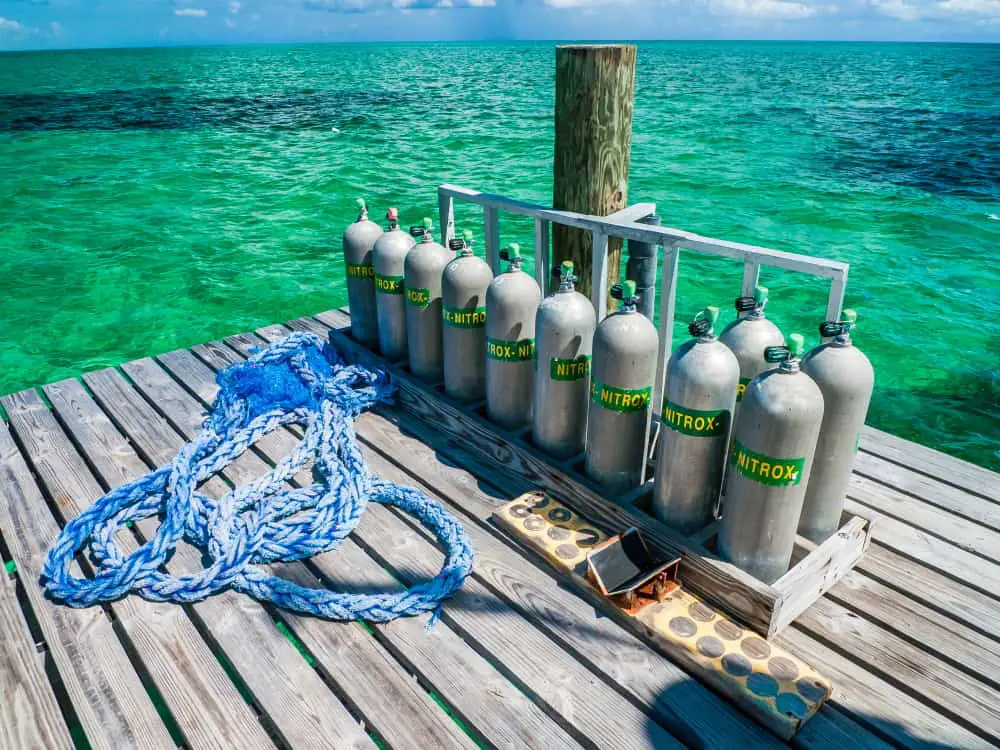
Which one is right for you?
It all depends on where you see your diving career, long-term. If you enjoy shorter dives in which you can explore shallow depths, you don’t need to pursue anything more than atmospheric air.
However, if you are interested in stepping up your game or becoming a technical diver, you may want to look into getting certified in more complex breathing gas usage.
Whatever you decide, make sure that you’re putting careful thought into what is in your breathing gas. Becoming more knowledgeable of the percentages fill up your tank will make you a safer diver.
